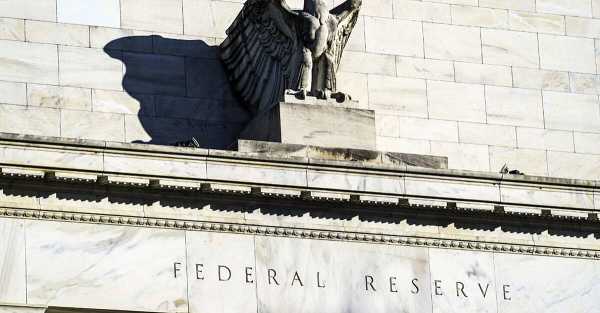
A sharp rise in consumer inflation expectations to levels not seen since the early 1980s, coupled with jittery markets and rising Treasury yields on Friday, sharpened the Federal Reserve's dilemma over whether the economy will face another price shock or fall into recession.
As households, businesses and global investors quickly adjust to the effects of President Donald Trump's aggressive import tariffs, Fed policymakers said the outlook was becoming increasingly difficult to forecast as they weighed recent market developments and a worrying surge in consumer sentiment about coming inflation.
“It’s hard to say with any certainty how the economy will develop,” New York Federal Reserve President John Williams said in a speech to the Puerto Rico Chamber of Commerce that included estimates that growth would fall below 1 percent this year, inflation would accelerate to 4 percent and unemployment would rise to 5 percent — bad outcomes for a central bank that wants to keep inflation low and employment high, and a potentially big blow to the purchasing power of U.S. households.
“Given the uncertainty of the impact of recently announced tariffs and other policy changes, there is an unusually wide range of possible outcomes,” Williams said.
In a worst-case scenario, a sharp rise in consumers' short-term inflation forecasts would begin to weigh on the longer-term outlook and spill over into market-based policies that Fed policymakers have seen as consistent with the central bank's 2 percent inflation target so far.
Fed policymakers are prioritizing containing longer-term inflation expectations but are also watching a steady rise in expectations for the year ahead, which soared to 6.7% after Trump announced retaliatory tariffs on April 2, according to new data from the University of Michigan on Friday.
Rising inflation expectations could threaten the Fed's progress in tackling pandemic-era price increases and could undermine the central bank's ability to support an economy facing new risks as markets struggle to find their footing.
“The Fed or the Treasury should intervene reluctantly and only when it is truly necessary,” said Minneapolis Federal Reserve Bank President Neel Kashkari, who as a Treasury official ran the Troubled Asset Relief Program during the 2007-09 financial crisis.
“I think we should be very careful about taking steps that might signal a weakening of the Fed's commitment to reducing inflation (although I don't think that's the case),” Kashkari told CNBC.
New data from the University of Michigan confirmed a four-month rise in inflation expectations among consumers for the coming year and a decline in consumer sentiment that cut across partisan lines.
It was the combination of high inflation and high unemployment that led former Federal Reserve Chairman Paul Volcker to prioritize inflation control with tight interest rates in the late 1970s and early 1980s, triggering a recession.
St. Louis Federal Reserve President Alberto Musalem said Friday's University of Michigan consumer survey, which showed consumers' long-term inflation expectations at their highest level in 30 years, was a “notable” exception to other data that he said showed long-term inflation expectations were still stagnant.
“If we start expecting inflation to remain high in the long term, the task of restoring price stability and maximum employment becomes much more difficult,” Musalem said.
The implications for monetary policy – at least keeping interest rates on hold even if the economy, as many now expect, slows – underscore the crossroads the Fed may be approaching at a time when there is talk of market intervention or even emergency rate cuts to restore battered confidence.
Kashkari, in the most candid comments yet from a Fed official about a possible emergency response to the volatility that has gripped markets in response to Trump's tariff barrage, said it would take a clear emergency in the financial system for the central bank to intervene.
“If there is a dislocation, I don't predict that, but if there is a dislocation, we have the ability to smooth out that dislocation,” Kashkari said. “But I don't see much dislocation yet. I see some tensions, but the markets seem to be adjusting.”
While “markets continue to function well,” Boston Federal Reserve Bank President Susan Collins told the Financial Times, the central bank “has tools to address market functioning or liquidity issues if they arise.” Collins noted that the Fed has been quick to use those tools in the past. “We would be absolutely prepared to do so as needed,” she said.
After Trump announced tariffs last week, prices of U.S. stocks and Treasuries fell in unison, a potentially worrying sign that investors are turning away from U.S. assets overall.
Suspending some of Trump's planned import tariffs has done little to ease the shock.
Most often, U.S. Treasury yields fall during times of stress as investors look for a safe place to put their money.
Kashkari said investors could turn away from the United States, where Trump is trying to reduce the goods trade deficit.
“There's a lot of complexity here,” the president of the Minneapolis Federal Reserve said, noting that the dollar is also weakening.
“Typically, when you see a significant increase in tariffs, I would expect the dollar to rise. The fact that the dollar is falling at the same time, I think, lends more credence to the story of a change in investor preferences.”
Sourse: breakingnews.ie



